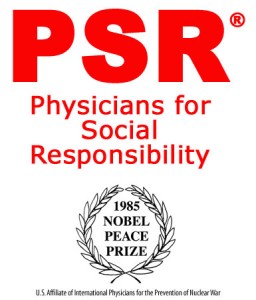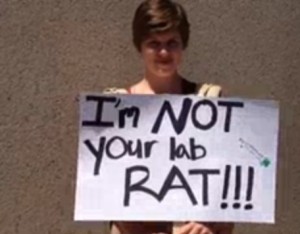Toxicology
New Studies Link Air Pollution To Diabetes and High Blood Pressure in Pregnancy
 Sometime during the 1990's it became evident that air pollution was more than just a threat to your lungs. Studies begin linking bad air with brain disorders, heart attacks, and hormonal disruption. This pool of research is now very deep and this month got a little deeper with publication of studies linking air pollution to Type 2 Diabetes and high blood pressure.
Sometime during the 1990's it became evident that air pollution was more than just a threat to your lungs. Studies begin linking bad air with brain disorders, heart attacks, and hormonal disruption. This pool of research is now very deep and this month got a little deeper with publication of studies linking air pollution to Type 2 Diabetes and high blood pressure.
From the University of Maryland comes a report that concludes air pollution increases inflammation of the heart which leads to diabetes when combined with a high fat diet – the kind so many Americans are still eating. Sedentary mice were fed the high-fat diet and then forced to breath Beijing-like levels of air pollution. Exposure to that bad air, primarily high levels of particulate matter, increased the likelihood of the mice developing diabetes by 2 to 4 times, and increased he severity of the disease as well. But hey, we're in America where the air is so much cleaner than China's, right? According to Dr. Sanjay Rajagopalan, Professor of Cardiovascular Medicine at the University of Maryland,
"….there have been at least 15 studies that have actually extended these observations of experimental models to large populations, and some of these have been done obviously in North America where we live, you know, in a relatively clean environment from an atmospheric standpoint thanks to regulation put together by Congress in the 1970s..but despite that even with the levels you’re exposed to with this continent we still see continuing associations between inhaled particulate matter content and susceptibility to type 2 diabetes.
Meanwhile, researchers at the University of Florida found that exposure to four air pollutants, including two specific types of fine and coarse particulate matters, sulfur dioxide and carbon monoxide, may be more toxic to pregnant women than breathing in cigarette smoke.
"Fetal development is very sensitive to environmental factors," said Xiaohui Xu, an assistant professor of epidemiology in the university. "That is why we wanted to do this research. Hypertension (high blood pressure), in particular, is associated with increased morbidity and mortality, causing a lot of problems for the mother and fetus, including preterm delivery."
Xu and his colleagues matched up 22,000 births in Jacksonville Florida in 2004-2005 with EPA pollution data. After controlling for other risk factors like income and exposure to smoking, they concluded that exposure to air pollutants throughout the first two trimesters of pregnancy increased women's risk of developing one of these conditions as much or more as smoking itself.
So how much influence do environmental factors have on modern health? Dr. Rajagopalan says a lot:
"…there’s a growing body of data that’s suggesting that whether it’s water or air or things that you eat, the packages that food is packed in…all of these things have ever so slight effects on your susceptibility to a number of chronic diseases. And these are things that are the reality, but are really the primary prevention measures where if you took care of these issues, you might not have problems to begin with. So these are easy solutions, clearly when you start to think about it, but also equally complex in terms of implementing at a societal level, because it takes so many different stakeholders to agree and to make these changes, you know, it tends to be a lot more complex.
Yep. We noticed.
“Did you know there are five carcinogens in Clearasil?”
 That's the question called out from the bathroom by his wife that finally put Ed Brown on the road to making a film about how many synthetic chemicals we're exposed to in our daily lives, often without our knowledge or consent. Brown's final product, "Unacceptable Levels," has its Dallas premiere the evening of January 30th.
That's the question called out from the bathroom by his wife that finally put Ed Brown on the road to making a film about how many synthetic chemicals we're exposed to in our daily lives, often without our knowledge or consent. Brown's final product, "Unacceptable Levels," has its Dallas premiere the evening of January 30th.
At the time, the couple had recently gone through a second miscarriage. "We thought we'd been doing everything right this time – eating organic, staying away from second-hand smoke." They didn't suspect chemical assault by zit cream.
"The Clearasil question" prompted Brown, a former stand-up comedian and CBS Sports staffer, to begin looking at the ingredients of lots of different products we use everyday, including the water we drink. How was it legal to sell carcinogens in something people put on their faces? What was a "safe" dose of a cancer-causing substance, and how did we know it was safe? He found the same pattern time and again – exotic chemicals included for mostly esthetic reasons that had almost no information about how they actually affected human health in the real world, being released on an unsuspecting public to mix and match in ways never predicted by anyone.
At the time, Brown was in the restaurant business. He had never made a film before. But using a camera he'd bought for family use, Brown became a one-man-video-band who went out and interviewed academic and industry experts within one-day's driving distance from his middle-Pennsylvania home about these chemicals. "I edited these clips into a two, three-minute trailer and began showing it to people I knew, who passed it along to people they knew. It eventually caught the attention of producers who wanted to help make the larger film and get it distributed. It was completely D.I.Y."
Brown is particularly concerned about how vulnerable women are to chemical exposure through personal care products and views moms as his film's primary target audience. "I think a lot of us look at a newborn baby and see it as a clean, completely unaffected child, but in fact we're having pre-polluted babies now, born with 200 or more synthetic chemicals in them. Science is telling us what's in them already could harm the health of their great grandchildren. Women are at greatest risk and because they're the child-bearers, but they're also putting successive generations at greater risk."
Changing the way things are done will take time. "It took decades for these chemicals to seep into the marketplace to the extent they have. It'll take decades to get them out." Instead of starting at the top of the bureaucratic food chain, he recommends pursuing change at the local level first. "Go to your neighborhood grocery store or drug store. Ask them to carry non-contaminated alternatives to these products. Ask the local water district why it has to put Fluoride, an industrial waste with no known benefits to dental health, into the water supply. Moms, when they're organized, have a lot of power in the marketplace. General Mills just took GMOs (genetically modified organisms) out of Cheerios because of moms."
When he does talk about wider changes in policy, he notes the attempted reform of the ancient Toxic Substances Control Act of 1976 and adoption of the Precautionary Principle as a gatekeeper for new chemicals. "There's no question that the current testing protocol for new chemicals is deeply flawed, with only a 90-day observation period, compared to multi-generational health effects we're seeing produced through the new field of epigenetics."
Brown spent 2013 picking up awards for "Unacceptable Levels" on the festival circuit and is using 2014 to roll out the film for general release later this year. He likens it to other low-cost first-time video guerrilla efforts like "Supersize Me" that captured wider audiences with word of mouth.
Now with three children, including a new five-month old, Brown has quit his restaurant job and is trying to make a go of it as a full-time filmmaker concentrating on subjects he cares deeply about. "There's no doubt that becoming a parent changes your perspective. These things are not something you think a lot about until you have kids." He's already at work on his next film: "Genetically Modified Movie."
Ed Brown's "Unacceptable Levels" will be shown at 7:30 pm January 30th at the AMC Valley View. Only a handful out of 230 tickets remain. They're $11 each. To buy them, visit the Dallas showing's own website. The film will be followed by a short panel discussion including Downwinders' Jim Schermbeck, Earthworks' Sharon Wilson, Texas Campaign for the Environment's Zac Trahan, and Susan Lee Pollard of the Texas Honeybee Guild.
“It’s impossible to know with no information what level is safe.”
 Some of the very best reporting about the underlying problem that's responsible for the West Virginia water crisis is being done by the local Charleston Gazette.
Some of the very best reporting about the underlying problem that's responsible for the West Virginia water crisis is being done by the local Charleston Gazette.
Following up on their great piece revealing that "MCHM" has exactly one un-reviewed, unpublished 1990 study performed by the chemical manufacturer to say that it's safe to use in the marketplace, on Friday the paper looked closer at the lack of human health effects protocols for chemicals used in the US as a whole.
"They did the best they could with very limited information," said Glenys Webster, an epidemiologist and postdoctoral fellow at Simon Fraser University.
But, Webster said, the entire system the U.S. uses to study and regulate toxic chemicals left decision-makers in West Virginia with a huge vacuum of data and analysis they really needed.
'It's impossible to know with no information what level is safe," Webster said. "I don't think we have the information to make a decision that will satisfy the public."
The paper also quotes toxicologists who explain why the Center for Disease Control's "safe" exposure level for MCHM, which is now being used to give the OK to resume use of Elk River water in Charleston, actually results in the most vulnerable sub-populations, infants and young children, ingesting "closer to that maximum level considered safe by the CDC."
The experts noted that the CDC calculation contained a wide variety of uncertainties that could mean the actual "safe" level is far different from what the agency estimated.
"I think the CDC tripped up when they delayed before issuing the pregnant woman warning," said Jennifer Sass, senior scientist with the Natural Resources Defense Council. "I would recommend that not only pregnant women, but also infants and children avoid the water as long as the chemical contaminants are detected. And, the public needs to know what the detection limit is, so an informed decision can be made about how long to wait after the chemicals are no longer detected."
Experts pointed to a variety of weaknesses in the CDC's approach. Most importantly, they said, it was based on little data. Also, rat studies based on high doses of chemicals can often mask adverse health effects that occur at lower levels.
"It's a very rough calculation," Webster said. "And each step has uncertainty associated with it. It is not an exact science."
Truer words were never spoken. Which is, in part, why 200 people will be going to the Dallas premiere of filmmaker Ed Brown's "Unacceptable Limits" on the evening of January 30th at the AMC 16 at Valley View. There were only 31 seats left as of Sunday afternoon. There's also a panel discussion at the end of the film that includes Downwinders' Jim Schermbeck, along with fracking activist Sharon Wilson, and Texas Campaign for the Environment's Zac Trahan. So please stop by the film's website and buy a ticket for $11.00 to go see a film demonstrating why, whether you live in Irving, Texas or Charleston, West Virginia, you're being chemically assaulted by the same obsolete regulatory system.
Why W. Virginia Crisis Is Perfect Example of Our Lab Rat Status Quo – “Unacceptable Limits” Premier Moves to Larger Theater
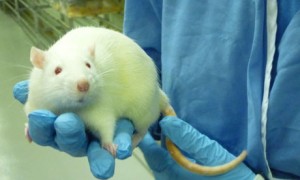 Just to make sure you got the message of Ed Brown's new film about how FUBAR'd the chemical regulatory system is in the US, the twice-convicted felon who runs Freedom Industries in West Virginia arranged for tens of thousands of gallons of a little-known, little understood synthetic substance to spill into the Elk River, cutting off drinking water to 300,000 Charleston area residents.
Just to make sure you got the message of Ed Brown's new film about how FUBAR'd the chemical regulatory system is in the US, the twice-convicted felon who runs Freedom Industries in West Virginia arranged for tens of thousands of gallons of a little-known, little understood synthetic substance to spill into the Elk River, cutting off drinking water to 300,000 Charleston area residents.
So don't let this contamination go to waste – get thee to the online ticket booth and grab some stubs to the January 30th Dallas premiere of "Unacceptable Limits" before it sells out again. They moved it to a bigger theater inside the AMC 16 complex and there are another 50-70 seats now available. The film's producer is showing up and they'll be a short panel discussion afterwards involving Sharon Wilson of Earthworks, Zac Trahan of Texas Campaign for the Environment and Jim Schermbeck of Downwinders at Risk.
And if you read nothing else about the West Virginia situation, please take five minutes to scan this excellent account by the local Charleston Gazette, of how officials are pulling estimates of "safe levels" of the substance MCHM out of their regulatory asses. Why? Because it takes the story away from the god-awful specifics of West Virginia and applies it across the board to explain how no one – not industry, not the US government, not scientists of any sort – has any idea what's a safe exposure to most of the 80,000 chemicals we're coming into contact with in the marketplace. This is exactly Mr. Brown's point in "Unacceptable Limits," and the West Virginia story makes it in spades…..
Tierney explained that the CDC looked for relevant studies of the chemical's health effects but found only one — a 1990 study by Eastman, maker of the product, that was not published in peer-reviewed literature and is considered proprietary.
That study, she said, was the basis for the median lethal dose, or LD50, listed on an Eastman "material safety data sheet," or MSDS that's been circulated by local emergency responders, health officials and the media.
And there you have it. We have one study about the health effects of this chemical. It was done in 1990 – which in environmental health data years, is like the mid-1800's. And it was done by the entity hoping to make a profit from its manufacture. Nothing unseemly there! And then of course we're only talking about fatal doses...
(Based) On that MSDS, the LD50 for Crude MCHM is listed as 825 milligrams per kilogram. This means that, when tested on rats, an 825 milligram dose per kilogram of body weight was enough to kill half the rats.
"The experts then took this number and calculated the uncertainty factors," she wrote. "In this situation there were two. The first uncertainty factor was translating these results from rats to humans. The second uncertainty factor took into account sensitive populations. This includes the elderly, the sick, the immuno-compromised and children, amongst others.
"Uncertainty factors range from 5 to 10 percent," she wrote. "Given the dearth of data and an abundance of caution, both uncertainty factors were rated at 10 percent."
This, Tierney explained, changed the level that would cause death to 8.25 milligrams per kilogram of body weight.
LD50 figures, though, consider only death. They would tell officials nothing about what levels at which chemical exposure would cause other health effects, even serious ones.
To address this, they changed the figure to 1 milligram per kilogram of body weight, which is equal to 1 part per million. It's not clear though — and Tierney did not explain — the scientific basis for the change from 8.25 milligrams per kilogram to 1 milligram per kilogram.
"In this case, it is the entire toxicity profile of a chemical that is unknown. However, predictions are based on what we do know looking at the chemistry and the available data," she said. "In this case, we are dealing with a short-term exposure as opposed to situations in which people have been exposed for weeks to months to years."
Well, at least as far as we know now. The tanks storing the chemical could have been leaking for a long time before they ruptured. The water supply system in Charleston isn't built to catch and filter this kind of chemical, so we'd never know except for a catastrophic accident. In all kinds of ways, we're no different than the rats in the Eastman experiment. No doubt, the catastrophe in Cahrleston will be an epidemiological field day of new research on the health effects of MCHM.
You could throw a dart at nearly all of those 80,000 chemicals on the marketplace and find a similar lack of hard data supporting their benign effect on human health. This is just a more spectacular and acute example.
You might rightly assume that the EPA or FDA or some government agency somewhere is testing these chemicals to make sure they'll be safe when they get rubbed on skin, or inhaled in a lung, or swallowed down a gullet. There is no such agency. No such testing takes place on these chemicals individually, much less in combination with one another, as they would be expected to be experienced in the real world. When there is a study, it is, more often than not, done by the company who wants to make a buck selling the chemical. And even then, the result is limited to finding a less than lethal dose, not understanding how the chemical might disrupt hormones, or the immune system, or have other, more subtle effects we have only come to know about in the last 5-10 years.
Do yourself a favor and get tickets to the January 30th showing of "Unacceptable Risks." Bring your neighbor. Before you find out more than you want to know about the next contaminant gone astray.
Physicians for Social Responsibility Talk This Thursday Night
DFW has a lot of things, but one thing we do not have is a group of medical professionals who speak out for environmental health when it's threatened by pollution or other human-made disasters. Nationally, the group Physicians for Social Responsibility (PRS) has filled this role for over 50 years now. Founded in 1961 to make the medical case against a "winnable" nuclear war, the organization has morphed into a strong voice for clean air and water from a public health point of view.
Despite being a national center of medical research and care, DFW doesn't have a local chapter of PSR. But this Thursday, Chris Masey, the Austin-based Texas Director of the group will be in Dallas to talk about their connection to current energy and environmental fights, including the one against aging East Texas coal plants that were the subject of a Dallas County Medical Society petition to the Texas Commission on Environmental Quality.
His visit is sponsored by Dallas Interfaith Power and Light. Its scheduled for this Thursday beginning at 7 at the White Rock Methodist Church on Oldgate Lane. Here's what their blurb says about the talk:
Chris will speak about air quality as a crucial key to human health including fossil fuels background and information, specific toxic emissions, air as a carcinogen, climate disruption, and the shifting patterns of infectious diseases. Chris’s lecture will also include information about Texas PSR, and ongoing advocacy efforts to phase out and close coal-fired power plants and to advocate for stricter carbon emission standards.
More about our speakers: Chris Masey, MBA, is a eighteen-year environmental professional who has worked on a diverse set of projects throughout Texas focusing on public health, conservation, land stewardship, alternative energy sources, recycling, and environmental and solid waste planning. During the last two years, Chris has proudly helped guide Texas PSR (formerly Austin PSR) to become the largest environmental advocacy group led by healthcare professionals in Texas! Chris’ dedication to environmental sustainability is grounded in his love of Texas and the desire for his family to continue to enjoy clean air, clear water, and wide-open spaces.
If you're a medical professional who's interested in helping out citizens in need, or you know someone who fits thst description, please consider attending this Thursday's meeting. There's really no excuse for a metropolitan area the size of DFW not to have a cadre of concerned doctors and nurses who can speak put against fracking close to homes or burning plastic in cement kilns, or just confirm for some of our more aggressively ignorant elected officials that indeed, smog and lead are bad for people. With any luck, perhaps Chris Masey's appearance here this week can begin a conversation that leads to such an effort. It is way overdue. See you there.
“Unacceptable Levels” Screening January 30th Reveals How Your Body is Ground Zero in the Chemical Wars
New Film Screening
One Night Only
"Unacceptable Levels"
One man and his camera traveled extensively to find and interview top minds in the fields of science, advocacy, and law. He weaves their testimonies into a compelling narrative of how the chemical revolution brought us to where we are, and of where, if we’re not vigilant, it may take us.
Thursday, January 30 7:30PM
at AMC Valley View 16 in Dallas
$11.00
(Only 100 tickets left as of Monday)
It doesn't take the average citizen very long to figure out that it's not only the chemicals being released from the drilling pad, or cement plant, or lead smelter they're fighting against that's harming them, but also the way those chemicals are allowed to be dispersed into the public commons and our bodies by government regulators.
Every month generates a new study confirming how levels of a pollutant previously thought to be "safe" actually turn out to be harmful. Or that exposures to multiple chemicals can cause cumulative health impacts not currently assessed. Or that even if one generation escapes harm from a dangerous exposure, as many as three of four future generations of descendants are still at risk from being harmed by that very same exposure. The more we study contamination, the more extensive and complex it is.
Meanwhile, government regulators are stuck in a simplistic 19th Century, "Arsenic and Old Lace" risk assessment view of the world that's completely underestimating the harm of 80,000 synthetic chemicals on the marketplace. They're in our food. They're in our water. They're in our air. They're in our sippie cups and backpacks and jewelry. Only a handful – less than 200 – have been studied extensively. We're all lab rats in a huge, unprecedented experiment on human health. Your body is now ground zero in this experiment, whether you like it or not.
Why are there higher rates of child asthma, autism, food allergies, immune system problems? Adult onset asthma is increasing, soaring lung cancer rates among non-smokers and insulin resistance-related maladies? Science tells us all of these health problems, and more, can be caused by an increasing body burden of higher and higher doses of involuntary chemical exposures.
There is no better or faster way to get schooled on this contradiction between the science and regulation of chemical exposure than a new 90-minute film coming to Dallas on January 30th called "Unacceptable Levels."
First, it assumes the Everyman viewpoint of Ed Brown the filmmaker. He's not a professional environmentalist or propagandist. He's a dad that works in a restaurant that's wondering what in the food and water he and his family are ingesting. It's his curiosity about the chemicals he's surrounded by, just as it is with most citizens being shat on, that fuels the film's narrative.
Brown hits the road and talks to some of the leading environmental health researchers and advocates, including Dr. Richard Clapp, Professor of Environmental Health, Boston University and Biologist Dr. Tyrone Hayes at The University of California, Berkeley, Randy Hayes of Rainforest Action Network, and Jeff Hollender, the former CEO of Seventh Generation. You never get the feeling you're being preached to or given a scolding. Ed Brown is as surprised as anyone else at what he's finding out as he makes each of his stops. (We've put in a request to interview Brown. Stay tuned)
Second, the film breaks the information down into bite-size pieces that are digestible even if you start out knowing nothing about environmental health. This is meant to be a primer for the average citizen, so bring your skeptical Tea Party uncle or aunt and see, if by the end of the film, they still think the EPA is "over-regulating" industry.
Finally, even though it doesn't address air contamination issues that Downwinders works on, the facts of how "small stuff adds up" and affects human health when it comes to industrial poisons is exactly the same no matter how you get exposed. It's the same rotten out-of-date system that's allowing the exposure. There's no better one-stop explanation of how that binary "safe/not safe" system stinks than this film. It's a great case for regulatory reform.
Downwinders at Risk has a long history of challenging that system. In 1996, we published "Sacrificing Science for Convenience," by the late Dr. Marvin Legator of the University of Texas at Galveston, the first journal-published and peer-reviewed critique of the way the State of Texas assessed toxic exposures. It paved the way for an historic Houston Chronicle series and even produced some reform of procedures. We've continually challenged the "safe" levels of ozone pollution allowed by EPA despite their own scientists telling them otherwise, as well as "acceptable" levels of toxins from cement kilns and gas wells. Currently, we're fighting over what are "safe' levels of lead to leave in Frisco from the Exide smelter.
If you want to know a bit more about the kind of issues talked about in the film and how they relate for the January 30th screening of "Unacceptable Levels," please see these past posts:
The Dose No Longer Makes the Poison, But We Regulate It As if It Does
Another Study Reveals Why Our System of “Safe Levels” is a Tragic Mirage
Dallas-based Gulf War Illness Study Points to Low Level Chemical Exposure; DMN Ignores
Follow-Up Study Confirms Lower Birth Weight Babies Around Fracking Sites
 A 2012 study by a Cornell graduate student Elaine Hill that found a 25% increase in low-birth weight babies within 1.5 miles (7920 feet) of a gas fracking sites in Pennsylvania got a boost from a follow-up study previewed over this last weekend at a conference in Philadelphia.
A 2012 study by a Cornell graduate student Elaine Hill that found a 25% increase in low-birth weight babies within 1.5 miles (7920 feet) of a gas fracking sites in Pennsylvania got a boost from a follow-up study previewed over this last weekend at a conference in Philadelphia.
Janet Currie of Princeton University, Katherine Meckel of Columbia University, and John Deutch and Michael Greenstone of the Massachusetts Institute of Technology also looked at Pennsylvania birth records and found the risk of low-weight births increased by 50% within 2. 5 kilometers (8125 feet) of a fracking site. That's over 7 times the distance of the recent 1500 foot buffer zone between homes and drilling pads passed by the City of Dallas last month.
This rate was constant for both households with their own water wells and municipal water system users, seemingly ruling out water contamination as a cause. Air, noise and light pollution are now the suspected culprits.
This second study was specifically designed to address critics of Hill's previous work:
"….they built on the work of Elaine Hill, a PhD student at Cornell University who sparked controversy in 2012 with a study showing that infants born near fracked gas wells had more health problems than infants born near sites that had merely been permitted for fracking. One criticism of Hill's study was that fracking activity might change the demography of an area, attracting more mothers who are likely to give birth to infants with health problem.
The new research addresses such concerns by following a constant group of mothers who had children both before and after the onset of fracking, and by controlling for geographical differences in mothers' initial health characteristics. It seeks to achieve the rigor of a controlled experiment by focusing on mothers who, due to their locations and the dates of their pregnancies, were effectively selected at random to be exposed to fracking.
The study is expected to be accepted for publication sometime this Spring after being peer-reviewed.
Something Wicked This Way Blows…..
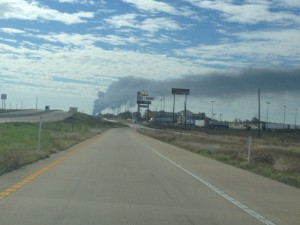 Events like the gas pipeline explosion in Milford are graphic reminders of just how vulnerable our North Texas air shed is to pollution sources from Ellis County. Proximity, predominant wind patterns, and potential for disaster combine to make our Southern neighbor a constant threat.
Events like the gas pipeline explosion in Milford are graphic reminders of just how vulnerable our North Texas air shed is to pollution sources from Ellis County. Proximity, predominant wind patterns, and potential for disaster combine to make our Southern neighbor a constant threat.
On Thursday, one could see the plume of smoke stretch out south to north across the entire Metromess. It's a safe bet that not too many of the 6 million plus residents of greater DFW knew there was a town called Milford near them at the beginning of the day, but a lot of them had inhaled Milford soot by evening.
That would be the same soot that reporters keep reminding us "the EPA" says is "non-toxic," based on measurements. Except there is no such thing as non-toxic smoke from a combustion source, which the Milford explosion and fire most certainly was. All combustion produces soot, or Particulate Matter. According to the latest evidence from research scientists, there is no safe level of exposure to PM Pollution. That is, any amount of PM pollution can do human health damage. Even short-term exposure can lead to asthma attacks, heart attacks and strokes. How do we know this – the EPA tell us so on their own website.
Only a couple of years ago, the Magnablend fire in Waxahachie poured its own plume of "non-toxic" smoke into DFW skies, despite the incineration of a large variety of chemicals used in the oil and gas industry. You might remember the water run-off from fighting that fire went into a creek and killed a lot of fish. But don't worry, that same stuff in your lungs is nothing to worry about. Perfectly natural to be able to see what your breathing.
Perhaps the most spectacular modern reminder of how close Ellis County is to us in air miles came back in 1995 when a Midlothian-based tire dump, called…wait for it…."Safe Tire Disposal Company" that was actually a collection site for the nearby cement plant tire-burning operation caught fire its own self.
There are fires, and then there are tire fires. They burn extremely hot, produce a lot of that "non-toxic" smoke, and can keep going for days. And that's exactly what happened in Midlothian. The predominant southerly winds carried all that dark dense smoke right into Downtown Dallas, where it surrounded and engulfed whole office buildings.
Timing is everything and so it was with the Safe Tire Fire. It happened at the exact moment when local citizens were engaged in very public debate with state and local officials over whether air pollution from the three large cement plants in Midlothian (two of which were burning tires) could impact air quality in DFW. You read that correctly. In 1995, citizens were still trying to make the case that millions of pounds of air pollution released just across the Dallas and Tarrant County lines could possibly have a negative impact on metropolitan smog levels. And it was an uphill fight. Officially, there was no confirmation of the impact of these facilities. The DFW air plan stopped at the County Line. Unofficially, you could see the cement plant smokestacks as you drove I-20 across Grand Prairie and Arlington.
When those tires went up in smoke, so did the arguments being used to downplay the impact of Ellis County pollution. It was like adding a dark black dye to the North Texas air flow, beginning in Midlothian, and watching it be carried downstream/downwind right into the heart of downtown Dallas. It was the most defiant demonstration of the citizen's arguments one could imagine. After that, it was a lot easier for everyone to understand Midlothian was only a breeze away from their lungs.
With yet another fire in Ellis County setting off yet another dark, thick plume of smoke that wafts into DFW, we get a reminder of how much closer together the air brings us. Only about half an hour or so away from Milford, a little bit further south, is a new belt of natural gas compressors churning out voluminous amounts of air pollution that's being blown in the same direction as the smoke from that gas pipeline explosion. Unlike that smoke, pollution from these facilities will keep being released 24/7 for the foreseeable future. Add up all this new compressor pollution and it could rival the impact of a new coal plant – just upwind of us. Just because you can't see it doesn't mean it's not having an impact.
Once again, the state's position is that this pollution is no big deal. Once again, citizens are disagreeing. Who would you put your money on?
Study: Low Levels Of Incinerator Pollution Linked to Premature Births
 A new study being published in the November issue of Epidemiology concludes that even low levels of pollution from solid waste incinerators causes an increase in premature births downwind.
A new study being published in the November issue of Epidemiology concludes that even low levels of pollution from solid waste incinerators causes an increase in premature births downwind.
Italian researchers examined over 21,000 births to women living within four kilometers of one of eight solid waste incinerators operating in the Emilia-Romagna region.
"Each newborn was georeferenced and characterized by a specific level of exposure to incinerator emissions, categorized in quintiles of PM10, and other sources of pollution (NOx quartiles), evaluated by means of ADMS-Urban system dispersion models. We ran logistic regression models for each outcome, adjusting for exposure to other pollution sources and maternal covariates.
Preterm delivery increased with increasing exposure….A similar trend was observed for very preterm babies. Several sensitivity analyses did not alter these results. Maternal exposure to incinerator emissions, even at very low levels, was associated with preterm delivery"
Now, you can reassure yourself that we have no single-purpose solid waste incinerators around these parts the way they do on he East Coast or Midwest, so we don't have to worry about this kind of threat. But that's not entirely accurate.
We do have solid waste incinerators in North Texas, they're just called cement kilns. And we have more incinerator capacity than anyone else in the country when it comes to cement kilns.
And, as it turns out, these cement kilns are expanding their lists of available "fuel" to include solid wastes, as well as coal – medical, municipal, and "hard to burn" plastics, as well as car parts, shingles and carpet remains. It's all part of the new wonderful world of commercial garbage burning. If the kilns happen to make some money in the process of turning themselves into under-regulated incinerators, well, all the better for their operators.
For example, and try not to throw up, in the Philippines, the local cement plant is marketing the burning of "Holcimables." What are "Holcimables" you ask? They're "plastics – styrofoam, sando bags, cellophanes and foil packs – textile and rubber." Yes, the same company that operates a cement kiln in North Texas is burning styrofoam in the name of environmental-friendliness in the Philippines. You can bet the Italian incinerators included in this new study were burning some of the same kinds of wastes with the same ingredients.
Burning stuff is bad, whether it's in an incinerator or a cement kiln. And industry is making it very hard to tell the difference.
Study Reveals Cancer Hot Spots Downwind of Canadian Oil and Gas Processing Centers
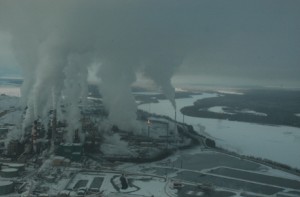 On the heels of the World Health Organization declaring air pollution a carcinogen, a study published this week from the University of California-Irvine and University of Michigan found higher levels of specific carcinogens in communities downwind of Canadian "oil, gas and tar sands processing zones", and higher rates of Luekemia and non-Hodgkin’s lymphoma among men living in those downwind communities.
On the heels of the World Health Organization declaring air pollution a carcinogen, a study published this week from the University of California-Irvine and University of Michigan found higher levels of specific carcinogens in communities downwind of Canadian "oil, gas and tar sands processing zones", and higher rates of Luekemia and non-Hodgkin’s lymphoma among men living in those downwind communities.
Despite their rural location, the recorded levels of the carcinogens, including 1,3-butadiene and benzene, were higher than in some of the world's most polluted cities. Examining area health records that went back a decade showed the number of men with leukemia and non-Hodgkin’s lymphoma was greater in the communities closest to the pollution plumes.
The authors strongly recommended that the industrial emissions be decreased to protect both workers and nearby residents.
“Our study was designed to test what kinds of concentrations could be encountered on the ground during a random visit downwind of various facilities. We’re seeing elevated levels of carcinogens and other gases in the same area where we’re seeing excess cancers known to be caused by these chemicals,” said UC Irvine chemist Isobel Simpson, lead author of the paper in Atmospheric Environment. “Our main point is that it would be good to proactively lower these emissions of known carcinogens. You can study it and study it, but at some point you just have to say, ‘Let’s reduce it.’
Co-author Stuart Batterman, a University of Michigan professor of environmental health sciences, agreed: “These levels, found over a broad area, are clearly associated with industrial emissions. They also are evidence of major regulatory gaps in monitoring and controlling such emissions and in public health surveillance.”
Dr. Batterman is familiar to Downwinders old timers as being the first scientist to take on the state's laughable "Health Risk Assessment" of TXI's burning of hazardous waste at it Midlothian cement plant. In what became known simply as the "Batterman Report," his mid-1990's critique of the official document was devastating in its scope and depth. It became a template on how to deconstruct any TCEQ attempt to gloss over the dangers of living downwind of a large polluter.
In this new study, Dr. Batterman and his colleagues monitored emissions in the rural Fort Saskatchewan area downwind of major refineries, chemical manufacturers and tar sands processors owned by BP, Dow, Shell and other companies in the so-called “Industrial Heartland” of Alberta. Taking random one-minute samples in 2008, 2010 and 2012, the results were very similar over time – amounts of some of the most dangerous Volatile Organic Compounds were 6,000 times higher than normal. Higher than in Mexico City during the 1990s or in the still polluted Houston-Galveston area.
Simpson said the findings were important for other residential areas downwind of refineries and chemical manufacturers, including parts of Los Angeles.
“For any community downwind of heavy industrial activity, I would say it’s certainly prudent to conduct surveys of both air quality – especially carcinogens – and human health."

